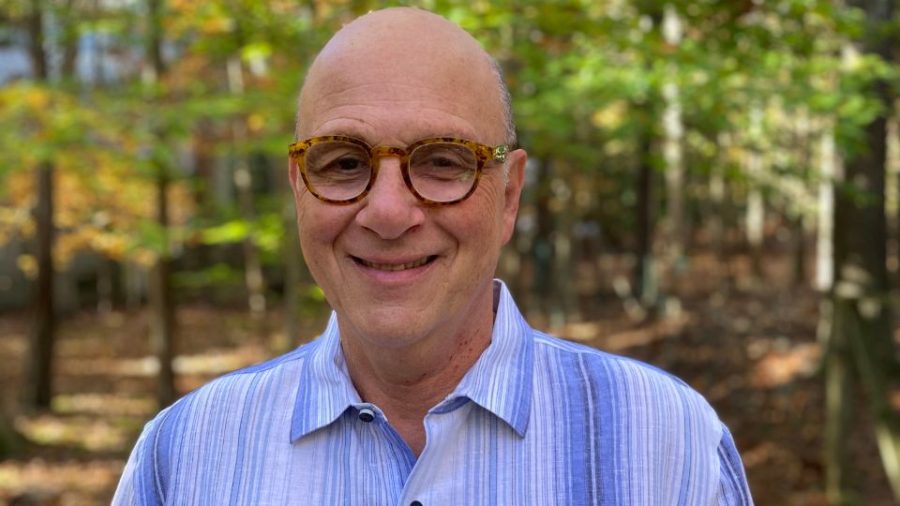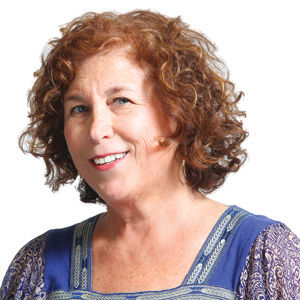Psychologist’s book helps unravel the ‘knots’ and ‘nots’ of trauma
Published January 8, 2023
Jerry Finkelstein, a clinical psychologist for more than 35 years, says he never had a burning desire to write a book about psychology. But when one of his students suggested he do so, he thought about it for a while and, with a mental health crisis in our midst, he decided the time was right.
“I wanted to write something that was very simple, and I wanted it to be accessible to anybody,” said Finkelstein, who received his doctorate at St. Louis University and lives in East Hampton, N.Y. “I had no idea until I began showing it to people and getting their responses that I was even going to publish it. I just kept getting this feedback that was overwhelmingly positive.”
Finkelstein was in private practice for many years in Manhattan before becoming senior director of the New School Counseling Services for 16 years, where he helped train 150-plus psychologists. And while he just published his first professional book at age 68, Finkelstein is no stranger to writing.
His resume includes a young adult novel, “Dog Days of Summer,” an allegory about 9/11; two satirical political blogs (grandoffgalparty.com and omfgtrumpblog.com); and a one-person show, “Peristalsis (Look it Up!),” about surviving excruciating back pain and surgery, which he wrote and performed at the International New York Fringe Festival in 2014.
His new book is “Where are Your (K)nots?: Getting Unstuck in Your Life.” At under 50 pages, it can be read easily in one sitting. But it packs a lot into those pages, as it attempts to create a framework for how and why people develop the psychological and emotional challenges they face. It’s a must-read for anyone thinking about starting therapy or for people who want to deepen their understanding of themselves. The book cuts to the chase and asks, in the title to its introduction, the age-old question: “Where the hell am I and how the hell did I get here?”
The Jewish Light recently spoke to Finkelstein to find out more about the importance of understanding and accepting our past and unraveling the knots in our lives that so often get us stuck.
Who is the audience for the book?
Anyone who could use a tool to think about their lives. It’s a great tool if you’re going to start therapy, but I also call it a book of curiosity. The title of the introduction kind of sums it up: “Where the hell am I and how the hell did I get here?” That’s the patient’s question, and the therapist and the client go on a journey to answer that. So that was the intent of the book: to help people widen the lens and look at the narrative of their lives and see where they are stuck and why. That’s what therapy is, from my point of view, the unraveling of knots and all the emotional stuff that gets stuck there.
You said the goal of the book is to create a template for thinking about the emotional arc of your life, to be curious about your experiences. Why is that so important?
As they say, history tends to repeat itself. The ways you learn to be in the world when you are young manifest itself later and can limit the freedom and flexibility to live as fully as possible. That can be restricting. I use the analogy of physical injury like scar tissue. If you have a lot of scar tissue, your mobility is limited. If you have a lot of old scar tissue from traumatic or painful emotional experiences that you never resolved, your life can be compromised by that. That’s why we need to be curious about our experiences.
In simplest terms, how do you define a “knot”?
It’s an emotional experience or series of experiences that are too difficult to process, the feelings are too much. For example, if you hurt yourself physically, all the blood rushes to where the injury is, and then you develop scar tissue. Well, emotional scar tissue can also form due to life traumas, often in childhood.
There are these points of experience. It could be repetitive behaviors like a parent undermining and humiliating you growing up, or it could be a major trauma like being sexually abused as a child. Either way, you don’t have the psychological tools to work through the experience, so you get stuck there. You compensate, and you work around it. And when you do that, you are limited in your capacity to find healthy solutions to experiences you confront later in life.
You discuss how knots can form in very early childhood, often based on the reaction the child has to a parent’s reaction to something the child is or isn’t doing? I know understanding this is key to the process, but can we really change what happened to us in childhood and fully heal?
The earlier the trauma, the more difficult the process. The goal is to create the awareness of what that initial experience was and develop the capacity to understand how it made you feel. If the goal is not to feel the pain of the past, and that’s where you’re tied up, then you have to have the wherewithal and desire to work through the pain in the present. It’s hard work. The thing that motivates you is the “nots.” Why can’t I do this? Why can’t I experience my emotions? Why can’t I have a meaningful relationship with a partner? Why do I have so much trouble following through on a career path? There are things you come up against and keep failing at them. The motivation comes from wanting things to change, so if it means going through some pain to get there, that’s what I need to do.
As you explain, often these “knots” turn into “nots” — stopping people from moving forward in their lives. What are some things we can do to keep from thwarting our own success in relaxing these nots and moving ahead?
For example, let’s say you were bullied as a kid, and you realize some of the hypersensitivity you experience, the belief that people are often judging you, comes from the experiences of being bullied. You can then go, “Yeah, I feel this way, but that’s not really what’s happening here.” That realization and working through what it felt like allows you to take more risks. But if you’re paralyzed by anxiety and don’t really know what it is about, it can control your life. It doesn’t always solve things, but it can give you the perspective that you need to begin to change the dynamic. Otherwise, you’re going to act like that frightened kid who was bullied.
How much does genetics play in knot building, if you will, and how much is environmental, situational?
With certain illnesses, genetics seem to be much more relevant, things like serious mental illnesses like bipolar disorder or schizophrenia. There are a lot of genetic correlations there. Even temperamentally, people are born with different levels of anxiety. Then there are all these mysteries. Some people who have really bad trauma come out of it OK, other people never get over it. But no doubt knowing and understanding your (family) history is so important. If you find out a relative had bipolar disorder and you’re displaying signs of it, that information can help you decide the best way to treat it.
Did your Judaism affect your decision to write this book, and/or has it influenced your practice as a clinical psychologist?
Being raised in a Jewish family helped me develop an ethics of caring and empathy, which is one of the fundamental principles of Judaism. I believe the exact word for that is chesed, which translates into “loving kindness.” I was the child who defended the bullied and took unpopular stands if I thought it was the “right” thing to do. My discomfort with injustice and the pain others felt because of this injustice is an integral part of who I am. Pursuing a profession that was focused on helping others was in the works long before I knew what a psychologist was.
What do you hope people will get from the book?
What I hope is that it allows people to develop a framework to help them tell the narrative of their lives. To look at a timeline and reflect on all the different things that influenced their lives and have had an impact on their emotional experiences. And that’s just the beginning part.
I want any person who picks this book up to say, “I never thought that way about that. This book gives me a different way of thinking about my life or understanding where I’m at.”
Then I want people to say, “What can I do about that?” Well, I can get help. But just the awareness alone is great. It gives you opportunities to challenge yourself, take risks. Sometimes, we get in our own way and cannot see our blind spots, particularly if there are things we are scared of.
Finkelstein’s book “Where are Your (K)nots? Getting Unstuck in Your Life” is available for $12.99 ($5.99 for ebook) at amazon.com or jerryfinkelstein.com. Fifty percent of the proceeds go to the Trevor Project, whose mission is to end suicide among LGBTQ young people, and the Steve Fund, which is dedicated to supporting the mental health and emotional well-being of young people of color.
















